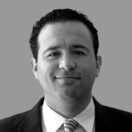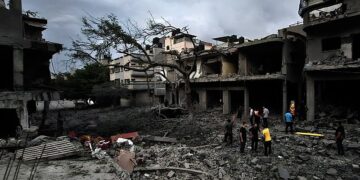January 1, 2019
End U.S. military support for the Saudi-led war in Yemen
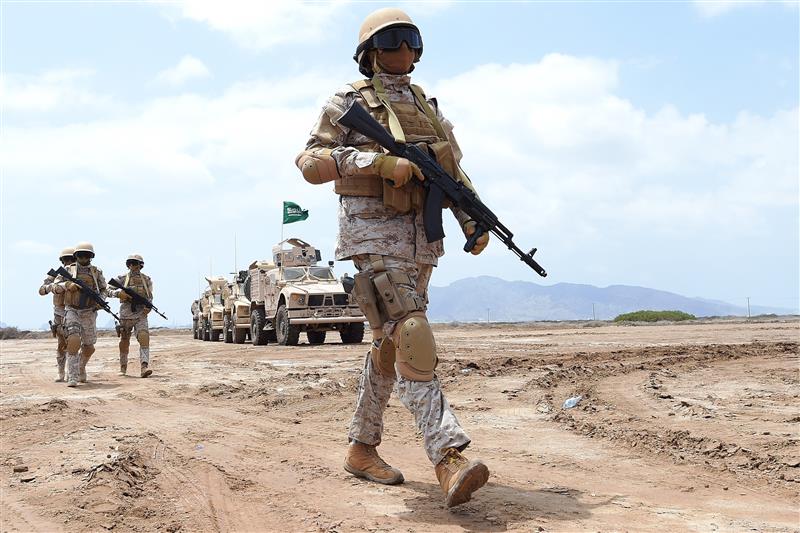
Key points
- The Yemeni Civil War is in its fourth year, and Saudi Arabia, the United Arab Emirates (UAE), and their allies are not close to a victory over the Houthi rebels.
- The United States should end all support for the Saudi-UAE campaign, support United Nations-led peace talks by pushing the Saudis to settle with the Houthis, and encourage a settlement between the native Yemeni parties to the civil war.
- None of the limited U.S. interests in the Middle East—preventing the emergence of a regional hegemon, preventing large-scale disruptions to the global oil supply, and eliminating transnational terrorists who directly threaten the United States—justify supporting the Saudi-led war in Yemen.
- The Houthis are not a threat to Americans, despite the limited support they receive from Iran, which would likely decrease or end in the absence of Saudi intervention.
- The Saudi-UAE campaign in Yemen harms U.S. interests: It prolongs and exacerbates a civil war that has increased Al-Qaeda in the Arabian Peninsula’s (AQAP) presence there, needlessly breeds new enemies and resentment toward the United States, and undermines U.S. standing as an exemplar of liberal values.
- The Saudi-UAE military campaign in Yemen has exacerbated the humanitarian disaster brought on by the civil war and has repeatedly targeted civilians with airstrikes. Those results would be tragic under any circumstances. Absent strong U.S. security interests there, the U.S. contribution is unconscionable.
Yemen’s civil war does not involve core U.S. interests
The outcome of Yemen’s disastrous civil war has little bearing on core U.S. interests—on the safety and material well-being of Americans. In fact, aiding the Saudi and UAE-led military campaign actually harms other U.S. interests.
The Saudi-UAE-led military campaign has inflicted vast suffering on Yemeni civilians. Consequently, the campaign’s assault on human rights damages the U.S. reputation as an advocate of liberal values and basic decency. It needlessly creates another large group of people that hate the United States, some enough to seek violent retribution. Furthermore, by exacerbating Yemen’s civil war and slowing bargaining that would restore political order, the Saudi-UAE campaign boosts jihadists in Yemen, including Al-Qaeda and Islamic State-linked terrorists.
Because U.S. interests in Yemen are limited—and if anything, damaged by the Saudi-UAE campaign—it is no sacrifice to pursue a policy that advances decent values there.
It is true that international politics is often tragic—security can sometimes demand sacrificing liberal values to ally with human rights abusers. But working with the Saudis in Yemen is not a “necessary evil.” It offends liberal values without a security payoff.
U.S. interests are best advanced by ending the U.S. military aid that enables the Saudi and UAE war in Yemen. That means ending refueling, intelligence support, and sales of munitions and other military goods used for bombing in Yemen and applying diplomatic pressure to stop the military campaign. Those measures will pressure the Saudis and the UAE to reach a settlement with the Houthis, which in turn would help the United Nations, through its Special Envoy Martin Griffiths, to broker a compromise agreement between Yemen’s warring factions (the Houthis and the disparate southern forces backing Abdrabbuh Mansur Hadi’s government), creating a transitional government that could end the civil war.
What are U.S. interests in the Middle East?
A clear, sober assessment of U.S. interests should guide our foreign policy. When it comes to the Middle East, U.S. interests are narrow:
- Preventing the rise of a regional hegemon
- Preventing large-scale disruptions to the global oil supply
- Eliminating transnational terrorists who directly threaten the United States
Countering hegemons
Preventing a regional hegemon in the Middle East is in the U.S. interest because such a hegemon might collect enough oil wealth to gain coercive leverage over consumer nations and become a military power threatening to U.S. interests.
But no state is close to emerging as a Middle East hegemon. Power is distributed among powers including Israel, Turkey, Egypt, Iran, and Saudi Arabia.
The Saudi military has performed poorly in combat in Yemen despite one of the largest military budgets in the world and has been outclassed by its smaller neighbor, the UAE. Meanwhile, as a Shia-majority, non-Arab nation, Iran is in the minority in the Middle East and lacks the wealth and military punch to emerge as a regional heavyweight that controls much foreign territory. A Houthi victory would not change this calculus.
Hegemons arise from cumulative gains, where states increase their power from the territory they control. Nazi Germany, for example, extracted wealth from the industry in the countries it conquered at the start of World War II to expand its military capability.
In the Middle East, oil wealth might be exploited this way.1Peter Liberman, Does Conquest Pay? The Exploitation of Occupied Industrial Societies (Princeton: Princeton University Press, 1996). But Yemen’s paltry economy and limited energy reserves mean that no cumulative gains are available. Like Syria or Afghanistan, its poverty, internal divisions, and resistance to central rule mean that outside states attempting to exercise political control over Yemen will tend to drain rather than increase their power.2Stephen Van Evera, “Why Europe Matters, Why the Third World Doesn’t: American Grand Strategy after the Cold War,” Journal of Strategic Studies 13, no. 2 (June 1990): 1–51.
Oil
The United States has an economic interest in avoiding significant, long-term disruptions to global oil markets, but the conflict in Yemen will not drive such an event. Yemen’s oil reserves are relatively minor. It ceased to pump any oil from the 2015 coalition intervention until recently, with minimal market impact.3Irina Slav, “War-Torn Yemen Restarts Oil Exports,” Oil Price, August 3, 2018, https://oilprice.com/Energy/Energy-General/War-Torn-Yemen-Restarts-Oil-Exports.html. A major Saudi reduction of output could cause prices to spike, but Saudi Arabia’s dependence on oil sales prevents them from threatening such action.
Houthi missile attacks on shipping do disrupt commerce, including oil transport. That threat is minor, however, and can be ended via the negotiated settlement of hostilities. The Houthis have used missile attacks to retaliate for Saudi air strikes and to raise the cost of its naval blockade. A missile attack on a Saudi tanker, for example, came in response to a Saudi bombing that killed 14 civilians, including children.4Saeed Al-Batati and Rick Gladstone, “Houthi Rebels Hit Saudi Tanker with Missile to Avenge Deadly Airstrike,” The New York Times, April 3, 2018, https://www.nytimes.com/2018/04/03/world/middleeast/houthi-missile-saudi-yemen.html. In the absence of the Saudi offensive, these strikes would end. And if necessary, the U.S. Navy is quite capable of keeping shipping lanes open, one of its core missions.
Terrorism
The United States has an interest in disrupting organizations planning terrorist attacks against its citizens and allies, but supporting the Saudi-UAE-led military campaign does not advance that goal. In theory, Saudi Arabia and the UAE have worked to eliminate terrorist threats from Yemen. In practice, their efforts have been anemic. Al-Qaeda continues to have a sizeable presence, and an Islamic State (ISIS) entity has claimed several terrorist attacks.5“Terrorist Designations of ISIL-Yemen, ISIL-Saudi Arabia, and ISIL-Libya,” Bureau of Counterterrorism and Countering Violent Extremism, Department of State, May 19, 2016, https://www.state.gov/j/ct/rls/other/des/266495.htm. The coalition has coerced and cajoled AQAP fighters to leave Yemeni cities, generally without seizing their weaponry and equipment, and recruited yet more into the various anti-Houthi militias.6Maggie Michael, Trish Wilson, Lee Keath, “Yemen: U.S. Allies Spin Deals with al-Qaida in War on Rebels,” Associated Press, August 6, 2018, https://pulitzercenter.org/reporting/yemen-us-allies-spin-deals-al-qaida-war-rebels. In general, the civil war’s continuation fuels jihadist organization there. The best counterterrorism policy in Yemen is to press for a settlement to the fighting so that a government can police against terrorists.
Yemen’s civil war is complex and long-standing
Yemen has existed only since the 1990 merger of the northern Yemen Arab Republic and the southern People’s Democratic Republic of Yemen.7Charles Dunbar, “The Unification of Yemen: Process, Politics, and Prospects,” Middle East Journal 46, no. 3 (Summer 1992), 456–476, https://www.jstor.org/stable/4328466?seq=1#page_scan_tab_contents.
A largely tribal society of more than 28 million people—and the poorest nation in the Middle East—Yemen is a majority Sunni country with a large Zaidi Shia minority (distinct from Iran’s Twelver Shias) representing approximately 35 percent of the population.8Yemen, CIA Factbook, https://www.cia.gov/library/publications/the-world-factbook/geos/ym.html.
From unification until 2011, Ali Abdullah Saleh, former president of the northern Yemen Arab Republic, ruled Yemen autocratically. A long-time ally of Saddam Hussein, Saleh received U.S. backing after 2001 because of his perceived value as a counterterrorism agent.9Scott Shane, “Ali Abdullah Saleh, Strongman Who Helped Unite Yemen, and Divide It, Dies at 75,” The New York Times, December 4, 2017, https://www.nytimes.com/2017/12/04/obituaries/ali-saleh-dead.html.
Since unification, Yemen has been chronically chaotic and violent. Southern separatism brought civil war in 1994.10Katherine Zimmerman, “Yemen’s Southern Challenge: Background on the Rising Threat of Secessionism,” Critical Threats, November 5, 2009, https://www.criticalthreats.org/analysis/yemens-southern-challenge-background-on-the-rising-threat-of-secessionism.
In 2004, after regime forces killed Zaidi leader Hussein Badreddin al-Houthi, the namesake of the Houthis, the group revolted against the government. Fighting continued for six years, with the regime accusing Iran of arming the Houthis.11Bruce Riedel, “Who Are the Houthis, and Why Are We at War with Them?” Brookings Institution, December 18, 2017, https://www.brookings.edu/blog/markaz/2017/12/18/who-are-the-houthis-and-why-are-we-at-war-with-them/; David Schenker, “Who’s Behind the Houthis?” Washington Institute of Near East Policy, February 22, 2010, https://www.washingtoninstitute.org/policy-analysis/view/whos-behind-the-houthis.
A Houthi incursion into Saudi Arabia precipitated a Saudi intervention in support of regime forces, followed by a negotiated ceasefire between the Houthis, Saudis, and Saleh in 2010.12Robert F. Worth, “Yemen’s Government Agrees to a Cease-Fire with Rebel Forces,” The New York Times, February 11, 2010, https://www.nytimes.com/2010/02/12/world/middleeast/12yemen.html.
The Arab Spring of 2011 spurred months of protests against Saleh’s rule. He abdicated after being badly wounded in a bomb attack, and then-Vice President Hadi took power in a deal brokered by the Gulf Cooperation Council. Still, the southern separatist movement grew more active, as did several jihadist groups, including AQAP. In the North, the Houthis continually clashed with government-aligned forces.13Adam Taylor, “Who Are the Houthis, the Group That Just Toppled Yemen’s Government?” Washington Post, January 22, 2015, https://www.washingtonpost.com/news/worldviews/wp/2015/01/22/who-are-the-houthis-the-group-that-just-toppled-yemens-government/.
Houthi protests against the government escalated in 2014. With the backing of forces controlled by former president Salah, the Houthi forces seized Yemen’s capital, Sana’a.
In early 2015, the Houthis began exercising power through the “Supreme Revolutionary Council.” Hadi escaped from house arrest and tried to reestablish an exile government in Aden, on the southern coast.
INSERT PHOTO: COMBATANTS ENGAGED IN YEMEN’S CIVIL WAR (PRO-HOUTHI VS. PRO-HADI/SAUDI COALITION)
Houthi gains and MBS fueled Saudi intervention in Yemen
By 2015, the Houthis had gained control of much of the heavily populated western part of the country but failed to unify Yemen.14Kelly McFarland, “Yemen: Understanding the Conflict,” The Conversation, June 17, 2018, theconversation.com/yemen-understanding-the-conflict-98296. Saudi Arabia then intervened on behalf of the Hadi government, along with the UAE and other Middle Eastern and African nations.
The Saudis have a long history of involvement—some would say meddling—in their neighbor’s politics. They saw the Shia Houthis as an Iranian proxy, despite their different brands of Shia Islam. And their new Crown Prince, Mohammed bin Salman (MBS), undertook a more aggressive approach to regional politics.15Dexter Filkins, “A Saudi Prince’s Quest to Remake the Middle East,” The New Yorker, April 9, 2018.
Saudi Arabia took the lead on the air campaign, while the UAE also launched airstrikes and led the ground offensive, both committing their own troops and training and supporting the southern forces backing the Hadi government.16Daniel Byman, “Saudi Arabia and the United Arab Emirates Have a Disastrous Yemen Strategy,” Brookings Institution, July 17, 2018, https://www.brookings.edu/blog/order-from-chaos/2018/07/17/saudi-arabia-and-the-united-arab-emirates-have-a-disastrous-yemen-strategy/. Kuwait, Bahrain, Qatar, Sudan, and Egypt contributed aircraft. The United States has provided refueling and intelligence support to help target airstrikes.17Jon Gambrell, “Here Are the Members of the Saudi-led Coalition in Yemen and What They’re Contributing,” Business Insider, March 30, 2015, https://www.businessinsider.com/members-of-saudi-led-coalition-in-yemen-their-contributions-2015-3.
The Obama administration offered this support partly due to a perceived need to appease Riyadh after signing the Joint Comprehensive Plan of Action—the Iran nuclear deal—with Tehran.18Kareen Fahim and Missy Ryan, “U.S. is Resisting Calls to End Its Support for Saudi-led Coalition in Yemen’s War,” Washington Post, March 20, 2018.
INSERT PHOTO: TIMELINE OF THE YEMEN CRISIS (2011-2018)
The Yemeni forces aligned against the Houthis are fractured. Saudi Arabia has supported forces linked to Islah, Yemen’s biggest Sunni Islamist party. The UAE mistrusts Islah because of its links to the Muslim Brotherhood and has worked with southern secessionist and Salafist forces against both the Houthis and AQAP.19“Yemen: Averting a Destructive Battle for Hodeida,” International Crisis Group, June 11, 2018, https://www.crisisgroup.org/middle-east-north-africa/gulf-and-arabian-peninsula/yemen/b59-yemen-averting-destructive-battle-hodeida. Southern secessionists have formed “security belt forces” in Aden and beyond, who have clashed with forces loyal to Hadi, their ostensible ally.
Three groups, collectively known as the “National Resistance Forces,” form the major pro-Hadi military force in Yemen.
The Guardians of the Republic consists of 4,000 to 9,000 fighters, many former troops in Yemen’s Republican Guard. They are led by Tareq Saleh, the former president’s nephew, who fled and switched sides after his uncle’s death.20Valentin d’Hauthuille, “Who Are the UAE-backed Forces Fighting on the Western Front in Yemen?” ACLED, July 20, 2018, https://reliefweb.int/sites/reliefweb.int/files/resources/acleddata.com-Who%20are%20the%20UAE-backed%20Forces%20Fighting%20on%20the%20Western%20Front%20in%20Yemen.pdf. The Tihami Resistance includes around 4,000 tribally-linked fighters from the Red Sea Coast area. The largest faction is the Giants Brigade, with 20,000 to 28,000 Salafist-leaning fighters.21Ibid.
The pro-Hadi/Saudi coalition experienced initial successes but had difficulty making progress in the Houthi heartland.
UAE-led forces have recently attempted to capture the port of Hodeidah, which is the leading transit route for food and supplies into Houthi territory. That offensive appears to have stalled.22Betham McKernan, “Battle Rages in Yemen’s Vital Port as Showdown Looms,” The Guardian, November 7, 2018, https://www.theguardian.com/world/2018/nov/07/yemen-hodeidah-airstrikes-saudi-led-coalition-ceasefire-calls. In mid-December 2018, at U.N.-sponsored talks in Sweden, the sides agreed to a cease-fire and U.N. oversight in Hodeidah.23Declan Walsh, “U.N-Brokered Hudaydah Truce Is Big Step in Yemen War,” The New York Times, December 13, 2018, https://www.nytimes.com/2018/12/13/world/middleeast/yemen-ceasefire-un.html.
Arguments for U.S. military support for the intervention in Yemen are unconvincinging
Besides a 2002 U.S. drone strike that killed one Al-Qaeda-linked terrorist, U.S. counterterrorism operations in Yemen began in 2009, accelerated in 2011, and peaked in 2017, with more than 120 strikes that year, including cruise missiles.24“U.S. Strikes in Yemen, 2002 to Present,” Bureau of Investigative Journalism, https://www.thebureauinvestigates.com/projects/drone-war/yemen.
Since the 2015 Saudi intervention, the U.S. military has supported the Saudi-led coalition by sharing intelligence, mostly for bomb targeting; providing mid-air refueling for Saudi and UAE warplanes; and supplying the coalition with precision weaponry and spare parts for aircraft.25Melissa Dalton, Hijab Shah, and Timothy Robbins, “U.S. Support for Saudi Military Operations in Yemen,” Center for Strategic and International Studies, March 23, 2018, https://www.csis.org/analysis/us-support-saudi-military-operations-yemen; Mohamad Bazzi, “The United States Could End the War in Yemen If It Wanted To,” The Atlantic, September 30, 2018, https://www.theatlantic.com/international/archive/2018/09/iran-yemen-saudi-arabia/571465/.
Washington has justified its support of the Saudi war effort on various grounds: to maintain Saudi favor and arms purchases, to limit the damage from Saudi airstrikes, to combat terrorism, to prevent Iran from gaining a Houthi-dominated Yemen as a proxy, and to prevent the Houthis from targeting Saudi Arabia and shipping with missiles. None withstand scrutiny:26Secretary of State Michael Pompeo, “Certification under Section 1290 of the John S. McCain National Defense Authorization Act for Fiscal Year 2019 (DIV. A, P.L.115-232) Related to Military Assistance for Saudi Arabia and the United Arab Emirates,” https://www.young.senate.gov/imo/media/doc/Yemen%20Certification%20Unclassified.pdf
The United States should not sacrifice anything to win Saudi support
Saudi Arabia is not a U.S. ally in the sense of having defense guarantee by treaty. It is more like a client state that relies on U.S. support, and a bad one at that.
Saudi Arabia is a major source of malign activity in the Middle East. Riyadh maintains a repressive domestic security apparatus and assassinates dissidents abroad. Most threatening to U.S. security, Saudi donors are “the most significant source of funding to Sunni terrorist groups worldwide,” as then-Secretary of State Hillary Clinton wrote in a secret cable in 2009, and “the world’s biggest funder of terrorism,” according to a 2015 book by Donald Trump.27Dominic Dudley, “Saudi Arabia Accused of Turning A Blind Eye To International Terrorism Financing By Global Watchdog,” Forbes, September 25, 2018, https://www.forbes.com/sites/dominicdudley/2018/09/25/saudi-arabia-accused-of-turning-a-blind-eye-to-international-terrorism-financing-by-global-watchdog/#45fa8ae36763.
True, the United States benefits from Saudi efforts to ensure the continued flow of oil to global markets, to prevent jihadist terrorism on the Arabian peninsula, and to buy U.S. goods. But the Saudi do these things out of self-interest—they will continue to do them if U.S. support for their war in Yemen is ended or if the relationship is downgraded.
Some worry that limiting support for the Saudis might limit U.S. arms sales. Indeed, Saudi Arabia is the largest foreign customer for the U.S. defense industry, signing arms deals since 2013 that could pay $25 billion.28Elizabeth McLaughlin and Conor Finnegan, “The Truth about President Trump’s $110 billion Saudi arms Deal,” ABC News, June 6, 2017, https://abcnews.go.com/International/truth-president-trumps-110-billion-saudi-arms-deal/story?id=47874726. https://www.washingtonpost.com/news/checkpoint/wp/2015/03/26/how-u-s-weapons-will-play-a-large-role-in-saudi-arabias-war-in-yemen. Those fears are overwrought for two reasons.
First, the economic impact of the sales for the United States is small, given that those sales, if they fully materialize, would be disbursed over decades in a U.S. economy that now sees $19.39 trillion activity in one year. Second, having already made substantial investments in American weaponry, the Saudis cannot easily switch to new platforms from another provider (like Russia or China) without prohibitive transition costs.29Terrence Guay, “Arms Sales to Saudi Arabia Give Trump All the Leverage He Needs in Khashoggi Affair,” The Conversation, October 19, 2018, https://theconversation.com/arms-sales-to-saudi-arabia-give-trump-all-the-leverage-he-needs-in-khashoggi-affair-104998.
At present, the United States may be able to ground the Saudi Air Force simply by withholding spare parts.30Editorial Board, “Who Needs Saudi Arabia?” Washington Post, October 15, 2018, https://www.washingtonpost.com/opinions/global-opinions/who-needs-saudi-arabia/2018/10/15/3ebe473c-d0a1-11e8-8c22-fa2ef74bd6d6_story.html.
The United States should sell arms strategically. Withholding offensive weapons sales relevant to the Saudi bombing of Yemen—meaning aircraft, related parts, and munitions—could serve U.S. efforts to end the Saudi campaign and encourage a settlement. This moratorium need not include cancellation of other defensive weapons systems, like the THAAD missile defense system, which the Saudis may buy. Their dependence on U.S. weapons and support suggests they will continue to buy U.S. weapons even if those for their offensive in Yemen are withheld.
Saudi airstrikes should be stopped, not guided
The secretaries of defense and state argue that U.S. military assistance makes Saudi airstrikes more tailored and precise; ergo: “without U.S. efforts, the death toll in Yemen would be far higher.”31Missy Ryan and Sudarsan Raghavan, “Mattis: U.S. Assistance to Saudi-led Coalition Fighting in Yemen ‘Is Not Unconditional,’” Washington Post, August 29, 2018; Mike Pompeo, “The U.S.-Saudi Partnership Is Vital,” The Wall Street Journal, November 27, 2018. The claim is dubious: U.S. aerial refueling allows pilots to stay aloft longer and practice “dynamic targeting,” where they hunt for targets of opportunity and likely increase civilian casualties.32Jeffrey E. Stern, “From Arizona to Yemen: The Journey of an American Bomb,” The New York Times, December 11, 2018, https://www.nytimes.com/2018/12/11/magazine/war-yemen-american-bomb-strike.html
Moreover, an obvious problem with this logic is that it seems to invite U.S. participation in any military campaign for any regime, no matter how violent and unethical, as long as the civilian death toll is somewhat less than it would be absent U.S. assistance. Furthermore, the alternative to a U.S.-aided campaign is not necessarily more brutal strikes, but rather fewer strikes or none at all. The United States can press Saudi Arabia to stop bombing to aid a political settlement.
The war in Yemen does not contain Iran—it may even help it
The idea that Saudi Arabia is a useful proxy in balancing Iran has several flaws. As discussed, Iran is not able to dominate the region, so U.S. interests do not demand Saudi efforts to weaken Iran. Backing the Saudi-Sunni side in their regional struggle with Shi’ite Iran needlessly embroils the United States in avoidable bloody conflict. And even if the U.S. policy aim were to harm Iran, it is unclear how the war in Yemen does so. Iran’s limited support for the Houthis costs it little.
Iranian support for the Houthis precedes the recent Saudi intervention but accelerated once it began.33Thomas Juneau, “Iran’s Policy towards the Houthis in Yemen: a Limited Return on a Modest Investment,” International Affairs, May 6, 2016, https://onlinelibrary.wiley.com/doi/abs/10.1111/1468-2346.12599. Tehran’s support is opportunistic, limited, and unlikely to continue in the event of a settlement to Yemen’s civil war. Although the Houthis are often accused of being Iran’s proxy, Iran has not committed sufficient resources to dictate Houthi actions. Iran reportedly discouraged the Houthis from taking Sana’a in 2014, advice that was ignored.34Elisabeth Kendall, “Iran’s Fingerprints in Yemen: Real or Imagined?” Atlantic Council, October 2017, www.atlanticcouncil.org/images/Irans_Fingerprints_in_Yemen_web_1019.pdf.
The Saudi campaign gave Iran an opportunity to bleed Riyadh at little cost.34Farea Al-Muslimi, “Iran’s Role in Yemen Exaggerated, but Destructive,” The Century Foundation, May 19, 2017, https://tcf.org/content/report/irans-role-yemen-exaggerated-destructive/. Rough estimates of Saudi spending on the war in Yemen exceed $100 billion, while Iran’s investment has largely taken the form of training and military guidance.35Yoel Guzansky and Ari Heistein, “Saudi Arabia’s War in Yemen Has Been a Disaster,” The National Interest, March 25, 2018 https://nationalinterest.org/feature/saudi-arabias-war-yemen-has-been-disaster-25064. This means Iran can continue the war at low cost, while Saudi Arabia spends billions each month.36Al-Muslimi, “Iran’s Role in Yemen Exaggerated, but Destructive.”
The Houthis do not threaten the United States
The Houthis are a locally-focused force which poses no threat to U.S. citizens or major interests. The Houthis are also enemies of AQAP and the other jihadist groups active in Yemen.37Mohammed Ghobari, “Al Qaeda and Houthis Clash in Central Yemen: Residents,” Reuters, October 16, 2014, https://www.reuters.com/article/us-yemen-security-idUSKCN0I41KG20141016. In fact, the Saudi-led coalition seems to have struck secret agreements with AQAP fighters and recruited hundreds of them to fight against the Houthis.38Maggie Michael, Trish Wilson, and Lee Keath, “Yemen: U.S. Allies Spin Deals with al-Qaida in War on Rebels,” Associated Press, August 6, 2018, https://pulitzercenter.org/reporting/yemen-us-allies-spin-deals-al-qaida-war-rebels.
Iran’s support does provide advanced weaponry to the Houthis, most likely including some of the roughly 100 missiles the Houthis have fired at Saudi Arabia.39Guzansky and Heistein, “Saudi Arabia’s War in Yemen Has Been a Disaster” The Houthis have also captured Soviet and North Korean-made ballistic missiles from the national military’s arsenal.40Asa Fitch, “How Yemen’s Houthis Are Ramping Up Their Weapons Capability,” Wall Street Journal, April 25, 2018, https://www.wsj.com/articles/how-yemens-houthis-are-ramping-up-their-weapons-capability-1524664569. Since 2016, however, the Houthis have fielded missiles with longer ranges than those in the arsenal, with some of those missiles being of confirmed Iranian origin.41“UN Report Confirms Houthi Missiles of Iranian Origin,” CSIS Missile Defense Project, January 17, 2018, https://missilethreat.csis.org/un-report-confirms-houthi-missiles-iranian-origin/ The missile attacks have also targeted shipping, including oil tankers and merchant vessels. Overall, the strikes have caused relatively little damage, but the prospect of sudden missile strikes is naturally alarming to Saudis.42Rania El Gamal, “Saudi Arabia Halts Oil Exports in Red Sea Lane after Houthi Attacks,” Reuters, July 25, 2018, https://www.reuters.com/article/us-yemen-security/saudi-arabia-halts-oil-exports-in-red-sea-lane-after-houthi-attacks-idUSKBN1KF0XN.
The quickest way to end these strikes is to end the Saudi-UAE intervention. The Iranians will have far less reason to supply the Houthis if the war ends or becomes a purely Yemeni one. And the Houthis, as discussed above, will have no incentive to target shipping or Saudi Arabia once the intervention ends.
How aiding the Saudi-UAE-led coalition harms the United States
The United States does not have great material stakes in Yemen, but on balance loses as a result of the Saudi-UAE campaign. Being party to the results of the bombing campaigns inflicted by autocratic regimes undermines U.S. efforts to stand for liberal values and decent treatment of noncombatants. Supporting the campaign is likely to create lasting resentment and enmity. And by deepening Yemen’s political chaos, the campaign seems likely to heighten terrorism there, rather than combat it, as its advocates claim.
The real losses in Yemen, of course, are suffered by Yemenis, most of them noncombatants. In any case, the results would be tragic, in the sense of being a terrible outcome of circumstance. But absent a security rationale that can at least produce a reasonable debate about whether some benefit redeems them, they are simply obscene. No tragic necessity explains U.S. policy in Yemen, just shoddy justifications for abetting brutality from the Saudi-UAE coalition.
The Saudis have fought a mostly aerial war against the Houthis, who lack an air force and substantial air defense capability. In addition to military targets, Saudi airstrikes have hit markets, weddings, funerals, and school buses, killing nearly 7,000 civilians, including children, as of mid-2018, according to the U.N.43Yemen: “United Nations Experts Point to Possible War Crimes by Parties to the Conflict,” United Nations, Human Rights, Office of the High Commissioner, August 28, 2018, https://www.ohchr.org/en/NewsEvents/Pages/DisplayNews.aspx?NewsID=23479&LangID=E., https://www.nytimes.com/2018/08/27/world/middleeast/airstrike-yemen-children.html.
The seemingly indiscriminate nature of the bombing and slow pace at which the Saudi government has acknowledged responsibility has deepened the political cost of the war. As the primary supplier, trainer, and enabler of the Saudi Air Force, the United States is naturally seen as bearing substantial responsibility for this outcome. That result seems likely to engender lasting hostility and potentially encourage support for violence, including terrorism, directed at the United States.44Robert Pape, Dying to Win: The Strategic Logic of Suicide Terrorism (New York: Random House, 2005).
The length and indecisive nature of the conflict means that Yemen has devolved into separate fiefdoms. AQAP has become more entrenched where alliances with local tribes against the common Houthi enemy have allowed them to persist. The secessionist Southern Transitional Council has grown in strength and influence, and despite setbacks, the Houthis continue to dominate much of the north and west.45Gamal Gasim, “What Is Going on in Southern Yemen?” Al Jazeera, January 29, 2018, https://www.aljazeera.com/indepth/opinion/south-yemen-secession-aden-180129095311293.html. At the moment, the anti-Houthi alliance on the ground is one of convenience, and it is unclear if those factions can remain united once hostilities cease.46Ben Watson, “The War in Yemen and the Making of a Chaos State,” The Atlantic, February 3, 2018, https://www.theatlantic.com/international/archive/2018/02/the-war-in-yemen-and-the-making-of-a-chaos-state/551987/.
The fragmentation of Yemen is not a direct threat to the United States, but it does create negative consequences: no reliable government partner to help with future counterterrorism operations; a lost market; and ethnic violence (as various factions try to consolidate their territories) that drives refugee flow, especially into nearby Europe.
Needless humanitarian disaster
The war has done critical damage to Yemen’s infrastructure, displaced more than two million people, and resulted in more than 17,000 civilian casualties.47“War in Yemen,” Council on Foreign Relations, Global Conflict Tracker, November 7, 2018, https://www.cfr.org/interactives/global-conflict-tracker?cid=ppc-Google-grant-conflict_tracker-031116&gclid=CjwKEAiAj7TCBRCp2Z22ue-zrj4SJACG7SBEH9uE_raTezcIufDr28x3vGe1FFlO2Y7kt4ui1PzWKxoCO5Tw_wcB#!/conflict/war-in-yemen. The protracted conflict—exacerbated by a massive Saudi naval, air, and land blockade—has left 14 million people (half the country’s population) vulnerable to starvation. This makes Yemen the worst humanitarian crisis in the world right now and one of only three famines worldwide in the past two decades.48Yuliya Talmazan, “Yemen Crisis: Three Stats that Reveal the Scale of World’s Worst Humanitarian Crisis,” NBC News, October 28, 2018, https://www.nbcnews.com/news/world/yemen-crisis-three-stats-reveal-scale-world-s-worst-humanitarian-n923741. Fifty thousand children are believed to have died in 2017 due to malnutrition and disease. There are estimated 1.2 million cases of cholera, making Yemen the site of the largest cholera outbreak in recent history.
Safeguarding U.S. interests in the Arabian Peninsula
Washington’s loyalty and commitment to Saudi Arabia is a bad reason for aiding its war effort in Yemen. A recalibration of the U.S.-Saudi relationship is overdue.
The United States should treat Saudi Arabia as a normal autocracy, not as enemy or ally. We should maintain normal diplomatic and trade relations but freely criticize their conduct and stop backing their foreign policy. That is especially true of sloppy and ill-conceived military campaigns causing great loss of innocent life without a justifying rationale for U.S. security.
Cutting off all U.S. support for the Saudi-UAE campaign—refueling, intelligence support, and relevant arms—will aid diplomatic efforts to get those nations’ leaders to negotiate an exit from Yemen through the United Nations. That will help facilitate peace talks among the warring Yemeni parties—although their fragmentation means that lasting peace will be hard to achieve.
The Saudi-led intervention has been a disaster for Yemen. On balance, it harms U.S. interests and offends all decent values. There is no compromise between U.S. security and values there—we are losing on both counts.
U.S. military and political support for the Saudi-UAE coalition should end immediately.
Endnotes
- 1Peter Liberman, Does Conquest Pay? The Exploitation of Occupied Industrial Societies (Princeton: Princeton University Press, 1996).
- 2Stephen Van Evera, “Why Europe Matters, Why the Third World Doesn’t: American Grand Strategy after the Cold War,” Journal of Strategic Studies 13, no. 2 (June 1990): 1–51.
- 3Irina Slav, “War-Torn Yemen Restarts Oil Exports,” Oil Price, August 3, 2018, https://oilprice.com/Energy/Energy-General/War-Torn-Yemen-Restarts-Oil-Exports.html.
- 4Saeed Al-Batati and Rick Gladstone, “Houthi Rebels Hit Saudi Tanker with Missile to Avenge Deadly Airstrike,” The New York Times, April 3, 2018, https://www.nytimes.com/2018/04/03/world/middleeast/houthi-missile-saudi-yemen.html.
- 5“Terrorist Designations of ISIL-Yemen, ISIL-Saudi Arabia, and ISIL-Libya,” Bureau of Counterterrorism and Countering Violent Extremism, Department of State, May 19, 2016, https://www.state.gov/j/ct/rls/other/des/266495.htm.
- 6Maggie Michael, Trish Wilson, Lee Keath, “Yemen: U.S. Allies Spin Deals with al-Qaida in War on Rebels,” Associated Press, August 6, 2018, https://pulitzercenter.org/reporting/yemen-us-allies-spin-deals-al-qaida-war-rebels.
- 7Charles Dunbar, “The Unification of Yemen: Process, Politics, and Prospects,” Middle East Journal 46, no. 3 (Summer 1992), 456–476, https://www.jstor.org/stable/4328466?seq=1#page_scan_tab_contents.
- 8Yemen, CIA Factbook, https://www.cia.gov/library/publications/the-world-factbook/geos/ym.html.
- 9Scott Shane, “Ali Abdullah Saleh, Strongman Who Helped Unite Yemen, and Divide It, Dies at 75,” The New York Times, December 4, 2017, https://www.nytimes.com/2017/12/04/obituaries/ali-saleh-dead.html.
- 10Katherine Zimmerman, “Yemen’s Southern Challenge: Background on the Rising Threat of Secessionism,” Critical Threats, November 5, 2009, https://www.criticalthreats.org/analysis/yemens-southern-challenge-background-on-the-rising-threat-of-secessionism.
- 11Bruce Riedel, “Who Are the Houthis, and Why Are We at War with Them?” Brookings Institution, December 18, 2017, https://www.brookings.edu/blog/markaz/2017/12/18/who-are-the-houthis-and-why-are-we-at-war-with-them/; David Schenker, “Who’s Behind the Houthis?” Washington Institute of Near East Policy, February 22, 2010, https://www.washingtoninstitute.org/policy-analysis/view/whos-behind-the-houthis.
- 12Robert F. Worth, “Yemen’s Government Agrees to a Cease-Fire with Rebel Forces,” The New York Times, February 11, 2010, https://www.nytimes.com/2010/02/12/world/middleeast/12yemen.html.
- 13Adam Taylor, “Who Are the Houthis, the Group That Just Toppled Yemen’s Government?” Washington Post, January 22, 2015, https://www.washingtonpost.com/news/worldviews/wp/2015/01/22/who-are-the-houthis-the-group-that-just-toppled-yemens-government/.
- 14Kelly McFarland, “Yemen: Understanding the Conflict,” The Conversation, June 17, 2018, theconversation.com/yemen-understanding-the-conflict-98296.
- 15Dexter Filkins, “A Saudi Prince’s Quest to Remake the Middle East,” The New Yorker, April 9, 2018.
- 16Daniel Byman, “Saudi Arabia and the United Arab Emirates Have a Disastrous Yemen Strategy,” Brookings Institution, July 17, 2018, https://www.brookings.edu/blog/order-from-chaos/2018/07/17/saudi-arabia-and-the-united-arab-emirates-have-a-disastrous-yemen-strategy/.
- 17Jon Gambrell, “Here Are the Members of the Saudi-led Coalition in Yemen and What They’re Contributing,” Business Insider, March 30, 2015, https://www.businessinsider.com/members-of-saudi-led-coalition-in-yemen-their-contributions-2015-3.
- 18Kareen Fahim and Missy Ryan, “U.S. is Resisting Calls to End Its Support for Saudi-led Coalition in Yemen’s War,” Washington Post, March 20, 2018.
- 19“Yemen: Averting a Destructive Battle for Hodeida,” International Crisis Group, June 11, 2018, https://www.crisisgroup.org/middle-east-north-africa/gulf-and-arabian-peninsula/yemen/b59-yemen-averting-destructive-battle-hodeida.
- 20Valentin d’Hauthuille, “Who Are the UAE-backed Forces Fighting on the Western Front in Yemen?” ACLED, July 20, 2018, https://reliefweb.int/sites/reliefweb.int/files/resources/acleddata.com-Who%20are%20the%20UAE-backed%20Forces%20Fighting%20on%20the%20Western%20Front%20in%20Yemen.pdf.
- 21Ibid.
- 22Betham McKernan, “Battle Rages in Yemen’s Vital Port as Showdown Looms,” The Guardian, November 7, 2018, https://www.theguardian.com/world/2018/nov/07/yemen-hodeidah-airstrikes-saudi-led-coalition-ceasefire-calls.
- 23Declan Walsh, “U.N-Brokered Hudaydah Truce Is Big Step in Yemen War,” The New York Times, December 13, 2018, https://www.nytimes.com/2018/12/13/world/middleeast/yemen-ceasefire-un.html.
- 24“U.S. Strikes in Yemen, 2002 to Present,” Bureau of Investigative Journalism, https://www.thebureauinvestigates.com/projects/drone-war/yemen.
- 25Melissa Dalton, Hijab Shah, and Timothy Robbins, “U.S. Support for Saudi Military Operations in Yemen,” Center for Strategic and International Studies, March 23, 2018, https://www.csis.org/analysis/us-support-saudi-military-operations-yemen; Mohamad Bazzi, “The United States Could End the War in Yemen If It Wanted To,” The Atlantic, September 30, 2018, https://www.theatlantic.com/international/archive/2018/09/iran-yemen-saudi-arabia/571465/.
- 26Secretary of State Michael Pompeo, “Certification under Section 1290 of the John S. McCain National Defense Authorization Act for Fiscal Year 2019 (DIV. A, P.L.115-232) Related to Military Assistance for Saudi Arabia and the United Arab Emirates,” https://www.young.senate.gov/imo/media/doc/Yemen%20Certification%20Unclassified.pdf
- 27Dominic Dudley, “Saudi Arabia Accused of Turning A Blind Eye To International Terrorism Financing By Global Watchdog,” Forbes, September 25, 2018, https://www.forbes.com/sites/dominicdudley/2018/09/25/saudi-arabia-accused-of-turning-a-blind-eye-to-international-terrorism-financing-by-global-watchdog/#45fa8ae36763.
- 28Elizabeth McLaughlin and Conor Finnegan, “The Truth about President Trump’s $110 billion Saudi arms Deal,” ABC News, June 6, 2017, https://abcnews.go.com/International/truth-president-trumps-110-billion-saudi-arms-deal/story?id=47874726. https://www.washingtonpost.com/news/checkpoint/wp/2015/03/26/how-u-s-weapons-will-play-a-large-role-in-saudi-arabias-war-in-yemen.
- 29Terrence Guay, “Arms Sales to Saudi Arabia Give Trump All the Leverage He Needs in Khashoggi Affair,” The Conversation, October 19, 2018, https://theconversation.com/arms-sales-to-saudi-arabia-give-trump-all-the-leverage-he-needs-in-khashoggi-affair-104998.
- 30Editorial Board, “Who Needs Saudi Arabia?” Washington Post, October 15, 2018, https://www.washingtonpost.com/opinions/global-opinions/who-needs-saudi-arabia/2018/10/15/3ebe473c-d0a1-11e8-8c22-fa2ef74bd6d6_story.html.
- 31Missy Ryan and Sudarsan Raghavan, “Mattis: U.S. Assistance to Saudi-led Coalition Fighting in Yemen ‘Is Not Unconditional,’” Washington Post, August 29, 2018; Mike Pompeo, “The U.S.-Saudi Partnership Is Vital,” The Wall Street Journal, November 27, 2018.
- 32Jeffrey E. Stern, “From Arizona to Yemen: The Journey of an American Bomb,” The New York Times, December 11, 2018, https://www.nytimes.com/2018/12/11/magazine/war-yemen-american-bomb-strike.html
- 33Thomas Juneau, “Iran’s Policy towards the Houthis in Yemen: a Limited Return on a Modest Investment,” International Affairs, May 6, 2016, https://onlinelibrary.wiley.com/doi/abs/10.1111/1468-2346.12599.
- 34Elisabeth Kendall, “Iran’s Fingerprints in Yemen: Real or Imagined?” Atlantic Council, October 2017, www.atlanticcouncil.org/images/Irans_Fingerprints_in_Yemen_web_1019.pdf.
The Saudi campaign gave Iran an opportunity to bleed Riyadh at little cost.34Farea Al-Muslimi, “Iran’s Role in Yemen Exaggerated, but Destructive,” The Century Foundation, May 19, 2017, https://tcf.org/content/report/irans-role-yemen-exaggerated-destructive/. - 35Yoel Guzansky and Ari Heistein, “Saudi Arabia’s War in Yemen Has Been a Disaster,” The National Interest, March 25, 2018 https://nationalinterest.org/feature/saudi-arabias-war-yemen-has-been-disaster-25064.
- 36Al-Muslimi, “Iran’s Role in Yemen Exaggerated, but Destructive.”
- 37Mohammed Ghobari, “Al Qaeda and Houthis Clash in Central Yemen: Residents,” Reuters, October 16, 2014, https://www.reuters.com/article/us-yemen-security-idUSKCN0I41KG20141016.
- 38Maggie Michael, Trish Wilson, and Lee Keath, “Yemen: U.S. Allies Spin Deals with al-Qaida in War on Rebels,” Associated Press, August 6, 2018, https://pulitzercenter.org/reporting/yemen-us-allies-spin-deals-al-qaida-war-rebels.
- 39Guzansky and Heistein, “Saudi Arabia’s War in Yemen Has Been a Disaster”
- 40Asa Fitch, “How Yemen’s Houthis Are Ramping Up Their Weapons Capability,” Wall Street Journal, April 25, 2018, https://www.wsj.com/articles/how-yemens-houthis-are-ramping-up-their-weapons-capability-1524664569.
- 41“UN Report Confirms Houthi Missiles of Iranian Origin,” CSIS Missile Defense Project, January 17, 2018, https://missilethreat.csis.org/un-report-confirms-houthi-missiles-iranian-origin/
- 42Rania El Gamal, “Saudi Arabia Halts Oil Exports in Red Sea Lane after Houthi Attacks,” Reuters, July 25, 2018, https://www.reuters.com/article/us-yemen-security/saudi-arabia-halts-oil-exports-in-red-sea-lane-after-houthi-attacks-idUSKBN1KF0XN.
- 43Yemen: “United Nations Experts Point to Possible War Crimes by Parties to the Conflict,” United Nations, Human Rights, Office of the High Commissioner, August 28, 2018, https://www.ohchr.org/en/NewsEvents/Pages/DisplayNews.aspx?NewsID=23479&LangID=E., https://www.nytimes.com/2018/08/27/world/middleeast/airstrike-yemen-children.html.
- 44Robert Pape, Dying to Win: The Strategic Logic of Suicide Terrorism (New York: Random House, 2005).
- 45Gamal Gasim, “What Is Going on in Southern Yemen?” Al Jazeera, January 29, 2018, https://www.aljazeera.com/indepth/opinion/south-yemen-secession-aden-180129095311293.html.
- 46Ben Watson, “The War in Yemen and the Making of a Chaos State,” The Atlantic, February 3, 2018, https://www.theatlantic.com/international/archive/2018/02/the-war-in-yemen-and-the-making-of-a-chaos-state/551987/.
- 47“War in Yemen,” Council on Foreign Relations, Global Conflict Tracker, November 7, 2018, https://www.cfr.org/interactives/global-conflict-tracker?cid=ppc-Google-grant-conflict_tracker-031116&gclid=CjwKEAiAj7TCBRCp2Z22ue-zrj4SJACG7SBEH9uE_raTezcIufDr28x3vGe1FFlO2Y7kt4ui1PzWKxoCO5Tw_wcB#!/conflict/war-in-yemen.
- 48Yuliya Talmazan, “Yemen Crisis: Three Stats that Reveal the Scale of World’s Worst Humanitarian Crisis,” NBC News, October 28, 2018, https://www.nbcnews.com/news/world/yemen-crisis-three-stats-reveal-scale-world-s-worst-humanitarian-n923741.
More on Middle East
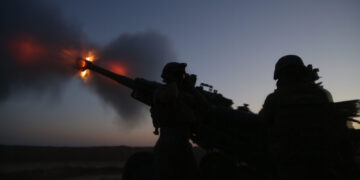
Featuring William Walldorf
December 11, 2025

By Benjamin Friedman and Rosemary Kelanic
December 5, 2025
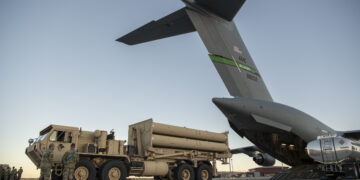
By Geoff LaMear
December 5, 2025

Featuring Rosemary Kelanic
December 2, 2025
